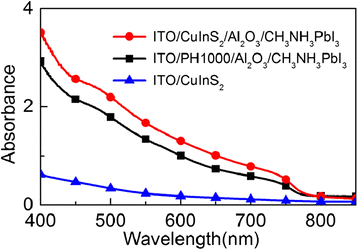Chng Ch Ch Tri Kim Nh

Two pseudohalide thiocyanate ions (SCN −) have been used to replace two iodides in CH 3NH 3PbI 3, and the resulting perovskite material was used as the active material in solar cells. In accelerated stability tests, the CH 3NH 3Pb(SCN) 2I perovskite films were shown to be superior to the conventional CH 3NH 3PbI 3 films as no significant degradation was observed after the film had been exposed to air with a relative humidity of 95% for over four hours, whereas CH 3NH 3PbI 3 films degraded in less than 1.5 hours. Solar cells based on CH 3NH 3Pb(SCN) 2I thin films exhibited an efficiency of 8.3%, which is comparable to that of CH 3NH 3PbI 3 based cells fabricated in the same way. As a service to our authors and readers, this journal provides supporting information supplied by the authors. Such materials are peer reviewed and may be re‐organized for online delivery, but are not copy‐edited or typeset. Technical support issues arising from supporting information (other than missing files) should be addressed to the authors.FilenameDescription464.3 KBmiscellaneousinformationPlease note: The publisher is not responsible for the content or functionality of any supporting information supplied by the authors. Any queries (other than missing content) should be directed to the corresponding author for the article.

Chng Ch Ch Tri Kim Nh 10

BACKGROUND:鈥俆he question as to whether triple antiplatelet therapy is superior to dual antiplatelet therapy for patients with acute myocardial infarction (AMI) and renal dysfunction, who undergo percutaneous coronary intervention (PCI), is unresolved. METHODS AND RESULTS:鈥侫s part of the Korea Acute Myocardial Infarction Registry (KAMIR), 2,288 AMI patients with renal dysfunction (glomerular filtration rate.